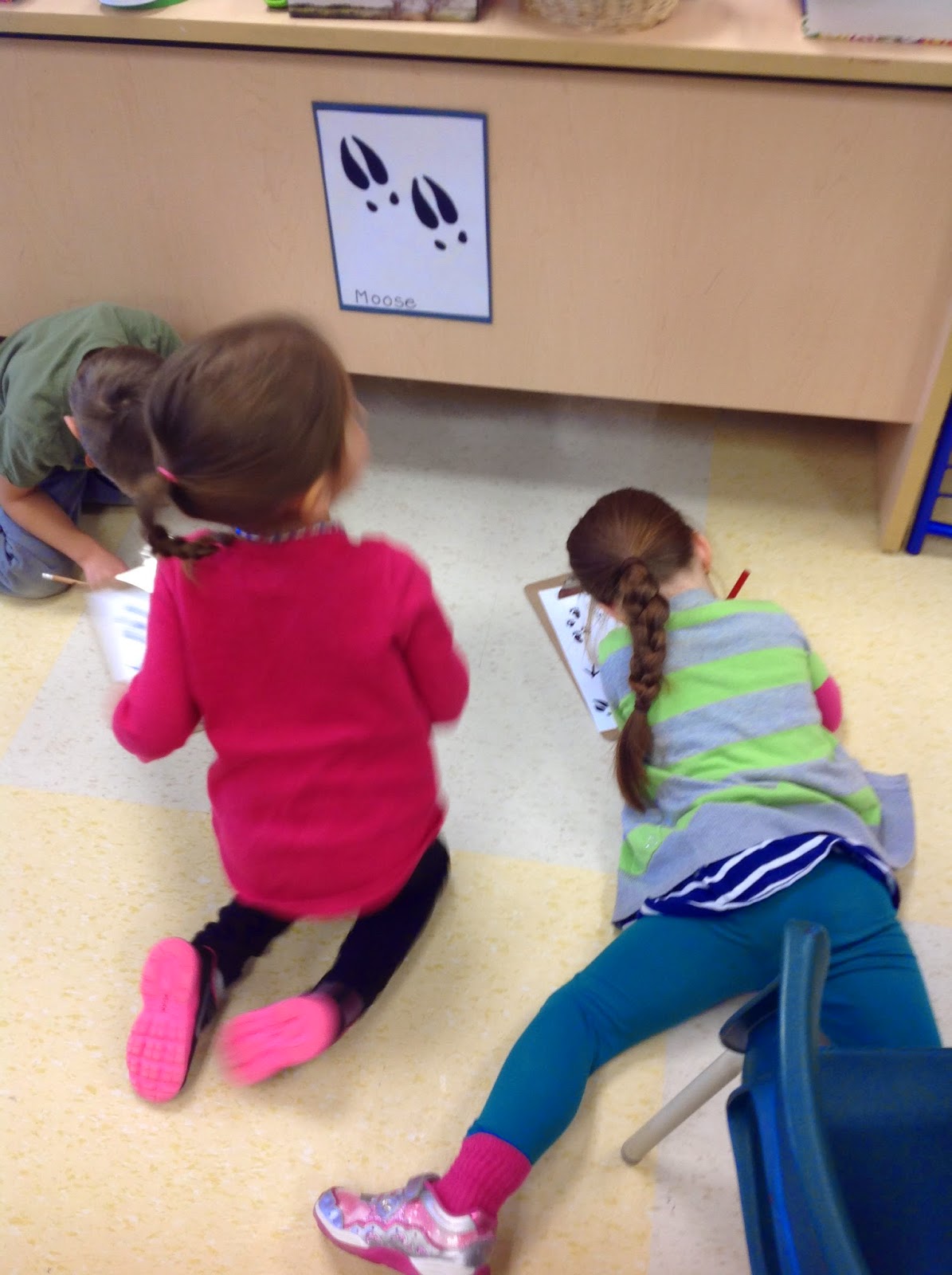We talked about what hibernation and migration mean. We knew that some animals, like geese, fly south in the winter while other animals, like bears and bats, sleep all winter. We even talked about how some animals adapt to survive the cold by growing thick fur or gaining weight to keep their bodies warm.
We read:
Animals in Winter
Written by Henrietta Bancroft and Richard Van Gelder
Illustrated by Helen K. Davie
Why do Animals Hibernate?
Written by David Martin
Some of us played with the forest animals. Using play dough, we made and explored different animal tracks.
Making a forest habitat for the animals using play dough, natural and recycled materials.
Look, we even built a den for the bears to hibernate! It's tricky to see, but there in an animal hiding in this cave.











































